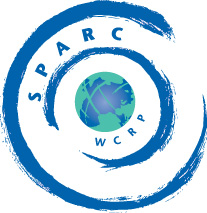 |
Stratospheric Processes And their Role in Climate
|
||||||||
| Home | Initiatives | Organisation | Publications | Meetings | Acronyms and Abbreviations | Useful Links |
![]()
 |
Stratospheric Processes And their Role in Climate
|
||||||||
| Home | Initiatives | Organisation | Publications | Meetings | Acronyms and Abbreviations | Useful Links |
![]()
Availability of ERA-40 Re-Analysis Products
The European Centre for Medium-Range Weather Forecasts (ECMWF) has announced the completion of their latest Re-Analysis scheme ERA-40 that spans a period of over 40 years, from September 1957 to August 2002. The ERA-40 six-hourly and monthly mean products at 2.5° resolution are publically available on http://data.ecmwf.int/data/
These products consist of 11 parameters, such as Ozone and Relative Humidity fields, given on 23 pressure levels ranging from 1000 to 1 hPa. A wider variety of 54 parameters in total is available on surface level. Users with further requirements and wishing to have access to the full resolution of the ERA-40 archive may submit their enquiries directly to ECMWF (data. services@ecmwf.int).
Assessments on the quality of the ERA-40 products have been carried out and more detailed information is available in the project reports and the ERA-40 website. ECMWF have summarized the following results (as of November 2003) of the ERA-40 quality assessment on issues related to the SPARC interests and activities:
- The general quality of the analyses improves over time.
- Quality is most uniform in time for the Northern Hemisphere (NH) troposphere and lower stratosphere (LS). Quality of the Southern Hemisphere (SH) is substantially better after 1978 and approaches that of the NH later in period.
- Trends and interannual variability in global-mean temperature from the surface to the LS are in reasonable agreement with a number of specialised data studies.
- Long-term temperature time series for particular regions, and for the upper stratosphere in general, require careful interpretation due to model biases and variations in observational coverage.
- Stratospheric sudden warmings and the quasi-biennial oscillation of stratospheric winds are well captured. The Brewer Dobson circulation is too strong.
- Total-column water vapour validates quite well against independent data for the satellite era. Tropical analyses are much drier in the pre-satellite period.
- The clear-sky outgoing long-wave radiation is of quite high quality, but there are some evident deficiencies in the all-sky radiation budget.
- Total-column ozone agrees well with independent data for most regions and much of the period. There are some problems with vertical structures, particularly at higher latitudes.
![]()